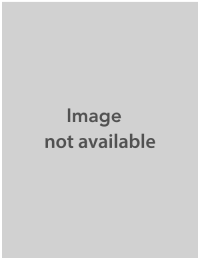Registration of ‘Jabal’: A high yielding variety originated from Ae. Speltoides
Published on: February 7, 2023, Submitted by Noureddine El Haddad on: January 31, 2023
'Jabal' is a new durum wheat variety released officially in Morocco because of its excellent yield potential in dryland areas, disease resistance and superior end-use quality. 'Jabal' is registered in the database of released cultivars this year by the Office National de Sécurité Sanitaire des Produits Alimentaires (ONSSA), Morocco. 'Jabal' was descended from the cross Korifla/AegSpeltoidesSyr//Mrb5 developed by the International Center of Agricultural in the Dry Areas (ICARDA). The new crop wild relative (CWR) derived elite 'Jabal' has superior grain yield compared to 'Karim', the second most grown cultivar in Morocco. 'Jabal' exhibited a good resistance to Septoria triticea blotch (Zymoseptoria tritici), and leaf rust (Puccinia triticina). The new released variety has higher grain protein, zinc content, Mixo score and larger grain size over 'Karim'. Thus, 'Jabal' should be effective in Morocco and neighboring areas experiencing severe drought stress, for bringing significant remunerative return to both producers and industries.
New durum wheat variety named Jabal from ICARDA released for cultivation in Morocco
The term 'Jabal' is derived from an Arabic word that means 'mountain’. 'Jabal' was given this name because of to its high potential yield in the high-lands ecosystems. 'Jabal' was a derived by top crosses using the wild relative Aeg. Speltoides, a suitable progenitor for breeding to both drought and heat 1. The selection of 'Jabal' was achieved from a three-way crosses of Korifla/AegSpeltoidesSyr//Mrb5 using bulk breeding method at the International Center of Agricultural in the Dry Areas (ICARDA). Pictures Jabal’s spikes and seeds are presented in Figure 1.
Figure 1. Illustration of spikes and seeds of the new variety 'Jabal'
In 2020, 'Jabal' was submitted to the Moroccan catalog by a farmer organization at Berrechid which produced G1 seed on 0,12 ha (2000 head rows). Once the Office National de Sécurité Sanitaire des Produits Alimentaires (ONSSA) inspected and accepted the G1 field, the seeds are sampled for laboratory analyses, then multiplied to sell them to farmers. Morocco, like many other North African countries, has strict requirements to accept germplasm in the catalogue trial. The strictest Moroccan system requires 50 Kg of 98% pure seeds for trial testing and 300 spikes at 99.1% homogeneity for uniformity testing.
'Jabal' was characterized by shallow root system, black awns, early flowering and very competitive yields in high-drylands and unfavorable zones of Morocco. During two successive seasons, 'Jabal' has been assessed across nine agro-climatic environments of Morocco. In the cold drylands of Middle Atlas Mountains in the north-central of Morocco, the grain yield of 'Jabal' reached 4067 kg ha-1, while the commercial check had 3123 kg/ha. However, 'Jabal' produced a grain yield between 1467 to 1829 kg ha-1 at the severe drought conditions of Sidi El Aidi (210 mm of rainfall), whereas Karim had a grain yield ranged from 751 to 1574 kg ha-1. The yield of 'Jabal' was 5132 under the rainfed conditions at Marchouch (285 mm of rainfall) with up 20% yield advantage over the check Karim. In the season 2019-2020, 'Jabal' generated a greater grain yield with 1092 kg ha-1 than the check Karim (915 kg ha-1) during exceptional drought circumstances at Marchouch (230 mm of rainfall). In addition, 'Jabal' shown a great adaptability in the irrigated locations of Tessaout and Melk Zehar in the southwest of Morocco, where terminal temperatures can reach up to 35 ◦C during the day and over 30 ◦C during the flowering stage. The grain yield of 'Jabal' was 5535 and 5408 kg ha-1 at Tessaout at Melk Zehar, respectively.
The new variety 'Jabal' was presents an excellent source to increase grain size. In fact, the use of CWR in the crossing almost invariably results in an increase in grain size 3. The 1000-kernel weight of 'Jabal' was 45.00 g across the nine experimental stations of Morocco, outstanding the commercial check Karim at 39.38 g. Likewise, Jabal was discovered to have high nutritional value with more protein content (13.83%), zinc concentration (29.84 mg kg-1), Mixo score (5.05), and yellow index (17.54) compared to Karim, which make it an excellent variety for value addition for food transformation. 'Jabal' displayed good resistance to Septoria triticea blotch (Zymoseptoria tritici), and leaf rust (Puccinia triticina).
A preliminary farmer survey “Participatory varietal selection” have been also conducted in Morocco during the seasons 2018-2019 and 2019-2020. A total of 19 Moroccan farmers were involved. Farmers were surveyed for their overall appreciation of specific test entries and for their preference for specific characteristics. 'Jabal' was one of the most preferred lines due its high yield potential, resistance to drought and diseases, spike size, grain size and its red grain colour. A clear yield advantage was provided by 'Jabal' at tested sites ranging from 15% to 50% yield over the check Karim. Farmers found 'Jabal's black awns to be the most appealing morphological feature since it was preferred by their grandfathers and produced the tastiest couscous (Selection by Stone blog). Furthermore, 'Jabal' was evaluated by farmers' wives, who expressed a high appreciation on the quality of bread made from this new variety. Figure 2 shows the flour and bread made from 'Jabal'.
'Jabal' was released particularly for cultivation in rainfed and high-dryland locations of Morocco, however it was also a viable variety for irrigated conditions. Developing durum wheat varieties with better resistance to abiotic and biotic stresses is the most effective means of managing these stresses and improving productivity under the current climate change scenarios.
Figure 2. Illustration of the flour and bread made from the new released variety 'Jabal'.
Acknowledgement
This work was undertaken as part of the initiative “Adapting Agriculture to Climate Change: Collecting, Protecting and Preparing CropWild Relatives, supported by the Government of Norway, managed by the Global Crop Diversity Trust with the Millennium Seed Bank of the Royal Botanic Gardens” under BOLD (Biodiversity for Opportunities, Livelihoods and Development).

